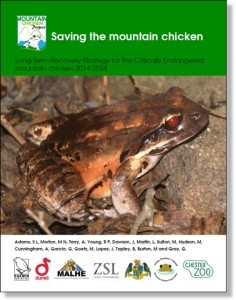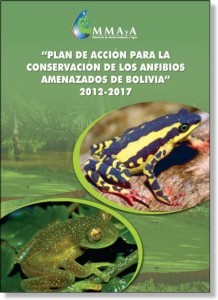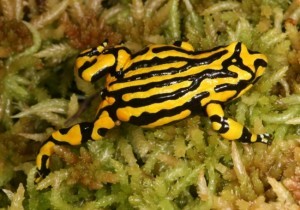 An ideal ex situ amphibian conservation program should follow a series of steps that combined, help to ensure a successful outcome for the program, and best practice management of the population. As well as effective species management, Some of the important questions that need to be considered prior to the establishment of a new program include:
An ideal ex situ amphibian conservation program should follow a series of steps that combined, help to ensure a successful outcome for the program, and best practice management of the population. As well as effective species management, Some of the important questions that need to be considered prior to the establishment of a new program include:
- Has this species been recommended for an ex situ program, and by who?
- Are adequate resources available to manage the ex situ population?
- Are adequate numbers of skilled staff available with the appropriate ex situ amphibian experience?
- Is sufficient space available for the required population size?
- Has a Taxon Management Coordinator for the ex situ population been appointed?
- Has a Taxon Management Group or Recovery Team been established?
- Has a Taxon Management Plan, Recovery Plan or Species Action Statement been written?
- Have Husbandry Guidelines been written?
This page provides information for the last four questions in the list above, and additional information on setting up new programs can be found on our Establishing Ex Situ Amphibian Programs page.
Taxon Management Coordinator
A Taxon Management Coordinator or Species Coordinator, generally takes the lead in forming a group of stakeholders who will be involved in the program throughout its life. The coordinator is also usually responsible for developing an action plan for the species and a set of husbandry guidelines that outline best husbandry practices for the species.  In some regions, Taxon Advisory Groups (TAGs) have been established by regional zoo associations, and the relevant TAG might appoint a Taxon Management Coordinator for managed species. In other regions where TAGs do not exist, the local regional zoo association might appoint a Taxon Management Coordinator. In some countries the conservation program might be being established by the State or National wildlife agency as a recovery program, in which case, the Taxon Management Coordinator might be appointed by the wildlife agency. A group of people may be formed based on the need to instigate a new ex situ program, and the members of the group might then elect the Taxon Management Coordinator. The Taxon Management Coordinator should be someone with good communication skills, who has sufficient time to oversee the management of the program. Many things can lead to the possible failure of a program and it is the role of the Taxon Management Coordinator to ensure that any possible points of failure are anticipated ahead of time, and resolved.
In some regions, Taxon Advisory Groups (TAGs) have been established by regional zoo associations, and the relevant TAG might appoint a Taxon Management Coordinator for managed species. In other regions where TAGs do not exist, the local regional zoo association might appoint a Taxon Management Coordinator. In some countries the conservation program might be being established by the State or National wildlife agency as a recovery program, in which case, the Taxon Management Coordinator might be appointed by the wildlife agency. A group of people may be formed based on the need to instigate a new ex situ program, and the members of the group might then elect the Taxon Management Coordinator. The Taxon Management Coordinator should be someone with good communication skills, who has sufficient time to oversee the management of the program. Many things can lead to the possible failure of a program and it is the role of the Taxon Management Coordinator to ensure that any possible points of failure are anticipated ahead of time, and resolved.
Taxon Management Group / Recovery Team
It is important to have representation from all of the relevant stakeholder groups who have an interest in the species being managed, and this can be achieved by the formation of a Taxon Management Group. Forming a management group will ensure that all stakeholders’ needs are met, that expertise is available on all aspects of managing the program, and that the management processes are transparent. Typical membership of a Taxon Management Group should include representatives from each of the institutions that will house the animals (zoos, aquariums, museums, private holders etc.), amphibian husbandry experts, veterinarians, educators, researchers, population biologists, and State or National wildlife agency representatives. Ideally, the group members would meet, at least during the establishment of the program, to discuss the overall aims of the program, to document any specific needs for the program or the species, and perhaps to draft a Taxon Management Plan. Members of the Taxon Management Group should approve all documents that are prepared on behalf of the program, such as the Taxon Management Plan and Husbandry Guidelines.
Taxon Management Plan / Recovery Plan / Species Action Statement
The Taxon Management Plan should include collaborative plans for captive breeding, research, educational messages and actions and also any field initiatives that are important to the program. It should receive input from all stakeholders and should detail long-term project strategies, including a business plan, measures of success and criteria for program termination, and any distribution/ownership issues. Important items to include in the plan are:
- Background details for the program, including the goals of the program
- Target population (number of individuals and/or institutions)
- Objectives, actions and time-frames
- The “role” of each institution and their animals (breeding facility, research, conservation education etc.)
- Information about both current and planned research projects (in situ and ex situ)
- Educational components of the program
- Roles of the stakeholder groups
- References to existing relevant publications or reports.
The Taxon Management Plan should be an evolving document that will change and grow throughout the life of the project. Amphibian Ark has developed a Taxon Management Plan template (in English and Spanish) that can be downloaded and used as a starting point when writing a plan for a new program. Once written, and approved by the members of the Taxon Management Group, and any other relevant regional or national groups, the plan can be sent to Amphibian Ark staff, who will make it available for others on the Husbandry Documents web page. There are a number of completed Taxon Management Plans available on this page.
Husbandry Guidelines
Husbandry Guidelines should provide sound advice and information to all institutions participating in the program, and should include those areas of husbandry that impact directly on population management. In summary, those areas relate to:
- Basic biological and field data
- Environmental requirements
- Enclosure design and dimensions
- Feeding and nutrition
- Identification of individuals (if possible)
- Breeding management
- Biosecurity
- Veterinary care
- Handling and transport protocols
- Relevant published material, including any existing husbandry guidelines for the species.
A template for developing husbandry guidelines (in English, French and Spanish) has been developed by Amphibian Ark and WAZA and should be used when writing new guidelines. Examples of completed husbandry guidelines for various species can be found on the Husbandry Documents web page. See the Establishing Ex Situ Amphibian Programs page for additional information on implementing amphibian conservation programs.








